
Why Commercial Chimney Systems Require More Frequent Cleaning
For business owners and facility managers in Houston, the reliability of building infrastructure is non-negotiable. Whether you run a bustling restaurant, a boutique hotel, or
Chimney waterproofing is more than just a preventative measure—it’s an investment in your home’s structural integrity, energy efficiency, and long-term comfort. Whether you live in Montrose, Sugar Land, or The Heights, ignoring moisture intrusion can lead to serious damage like mold, interior wall staining, and flue system deterioration. By taking proactive steps today, you can avoid expensive repairs and ensure your fireplace runs safely and efficiently during the cooler months.
Let’s dive into how waterproofing works, what signs to watch for, and why every Houston homeowner should make it part of their annual chimney care plan.
Houston’s humid subtropical climate is tough on masonry. While chimneys might look rock solid, they’re constantly under attack from moisture—especially during our intense rainstorms and high-humidity summers. Over time, water seeps into the smallest cracks and mortar joints, gradually eating away at your chimney’s integrity.
This isn’t just a cosmetic problem. Water damage can corrode metal components inside the chimney, deteriorate your flue liner, and even affect your home’s framing and drywall. Chimney waterproofing creates a breathable barrier on the exterior brick that blocks out water but still lets internal vapors escape. That’s critical for keeping your chimney safe, dry, and working as it should.
In Houston, where weather extremes are part of daily life, waterproofing isn’t optional—it’s essential. Without it, your chimney becomes a weak point in your home’s structure, especially during hurricane season or prolonged damp spells in the fall and spring.
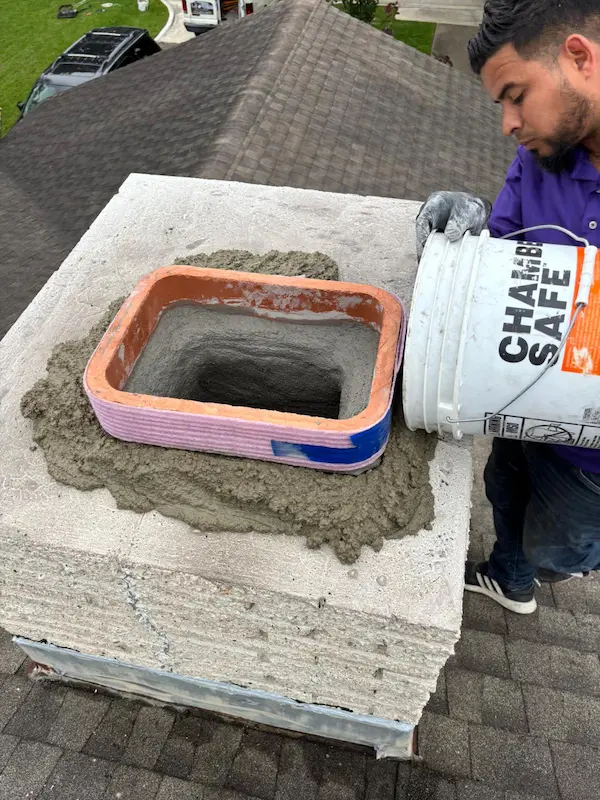
Trusted by 5k+ satisfied customers
143 Reviews
Needed chimney repair new gas logs and fire place screen. Willie did an excellent job. Very professional. Will definitely use again and recommend to my friends.
Lis Ham
75 Reviews
Texas Chimney refurbished my gas fireplace, converted a wood burning to gas, and fix the chimney. Excellent work by the project manager Eli and the entire team.
Kayla N.
77 Reviews
Went beyond the normal service and ensured my gas fireplace was fixed and working correctly. He even came out a second time on Christmas Eve! I would hire again and again.
Rodd K.
A+ Rating
Texas Chimney replaced chase pan and cap, repaired damaged brick, repointed mortar joints, and recaulked flashing, etc. Professional job, fair price, conscientious owner and crew.
Joe F.
You don’t have to be a chimney expert to spot trouble. If you’ve noticed water stains near your fireplace, a musty smell indoors, or bricks that appear flakey or crumbling, those are all early signs of water damage. Efflorescence—a chalky white deposit on exterior bricks—is a red flag for trapped moisture. And in Houston’s muggy environment, mold and mildew can develop faster than you’d expect.
Other warning signs include rust on fireplace doors, warped wood nearby, or even dripping sounds during a storm. If your chimney hasn’t been professionally inspected in over a year, it’s worth getting an expert from a local Houston company like Texas Chimney LLC to take a closer look.
A quick inspection can catch small issues before they become expensive repairs. Don’t wait for signs of serious damage—get ahead of the problem while your chimney is still salvageable.
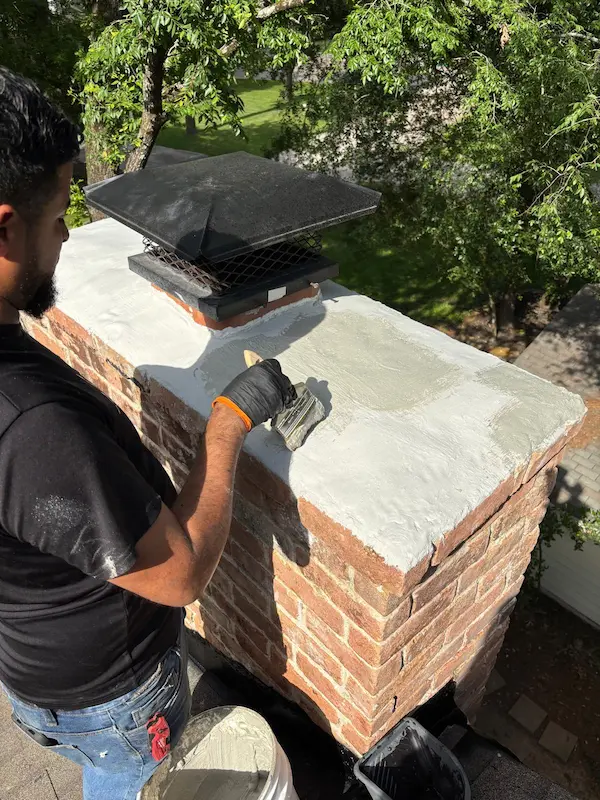
Free Inspection 7 Days A Week
Top-Rated Chimney Sweeping
100% Customer Satisfaction
Same Day Services

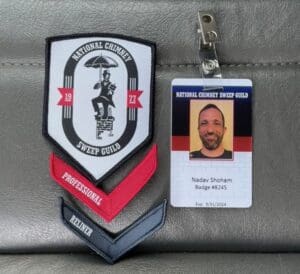
Nadav Shoham - chimney professional
Hello, Houston! 🏠
Welcome to Texas Chimney LLC, the heart of chimney care in the Lone Star State. For over 14 years, we’ve been keeping the hearths of Houston homes burning brightly and safely. As proud members of the Texas National Chimney Sweep Association and with our CSIA-certified professionals on board, we’ve blended time-honored techniques with contemporary knowledge to provide top-notch service. But don’t just take our word for it—our hundreds of 5-star reviews on Google, Yelp, HomeAdvisor, and Facebook speak volumes about our commitment to excellence. Trust in our legacy, and let us serve you with the warmth and expertise that Houston has come to love!
The process starts with a full chimney inspection—looking for cracked crowns, deteriorated mortar joints, and loose bricks. In Houston, where shifting soil and constant moisture can accelerate wear, these issues are common. Once repairs are made, a high-quality, vapor-permeable waterproof sealant is applied to the exterior. This isn’t just paint—it’s specially formulated for chimneys, allowing the structure to breathe while repelling water.
Professional waterproofing also includes reinforcing or replacing flashing (the metal barrier between your chimney and roof), resealing the chimney crown, and ensuring the chimney cap is intact and functional. These steps are critical, especially in Houston homes with complex rooflines or older masonry.
Unlike DIY options, professional waterproofing ensures lasting protection and compliance with local Houston building standards. It’s not just about sealing bricks—it’s about creating a durable barrier against the Gulf Coast’s punishing weather.

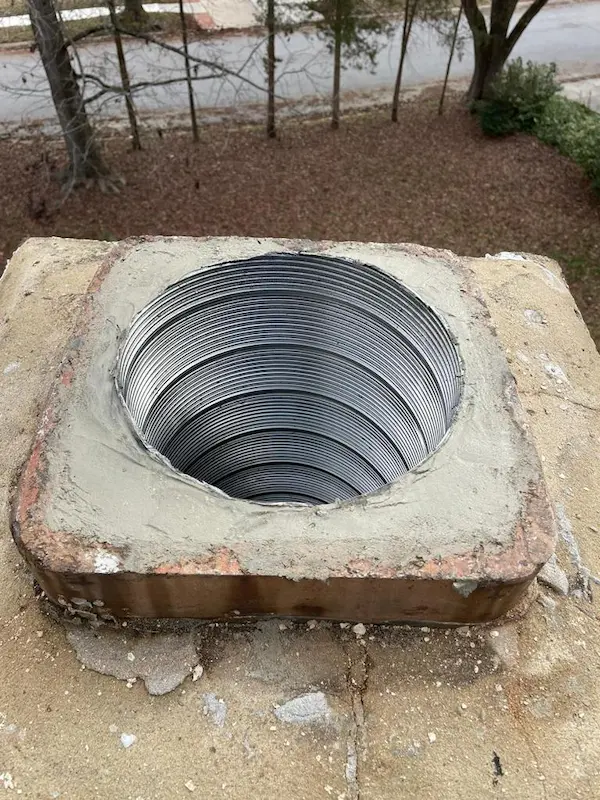
Waterproofing your chimney isn’t just about avoiding damage—it actually improves performance. A dry chimney drafts better, burns cleaner, and reduces the risk of backdrafts or smoke entering your living space. Over time, you’ll save on repairs, improve your home’s energy efficiency, and extend the life of your entire fireplace system.
Houston’s freeze-thaw cycles—yes, even here we get those surprise cold snaps—can make moisture damage worse. Water that seeps into your chimney expands when frozen, cracking bricks and mortar even further. Waterproofing prevents this cycle before it begins.
If you’re considering upgrades like chimney relining or switching to a gas fireplace, waterproofing is a smart first step. It preserves your chimney’s structure and maximizes the efficiency of any modern heating appliance you install.
Chimney waterproofing is crucial because it protects your chimney from moisture damage caused by rain, snow, and humidity. Moisture can seep into tiny cracks, weakening bricks and mortar, leading to costly repairs, mold growth, and even structural damage in other parts of your home. Waterproofing acts as a breathable barrier, keeping water out while allowing vapor to escape, preserving your chimney’s integrity and your home’s safety.
Common signs include water stains near the fireplace, a musty smell, spalling bricks (flaking or crumbling), and white chalky residue called efflorescence on the brick surface. You might also notice rust on metal chimney parts, dripping sounds behind walls, or deterioration inside the flue. These symptoms indicate moisture intrusion and signal it’s time for an inspection and possible waterproofing.
First, a technician inspects your chimney thoroughly, checking for cracks, damaged mortar joints, crown, and flashing issues. After repairing any damage, a high-grade, breathable waterproofing sealant is applied to the chimney’s exterior. This sealant blocks water but allows trapped vapors to escape, preventing moisture buildup inside. Additional checks on chimney caps and flashing ensure a complete weatherproof barrier.
Waterproofing extends your chimney’s lifespan by preventing erosion and freeze-thaw damage, which can cause bricks to crack and crumble. A dry chimney improves fireplace efficiency, reduces the need for costly repairs or replacements, and protects related components like dampers and flue liners. It also safeguards your home from water damage and helps maintain a clean, safe burning environment.

For business owners and facility managers in Houston, the reliability of building infrastructure is non-negotiable. Whether you run a bustling restaurant, a boutique hotel, or
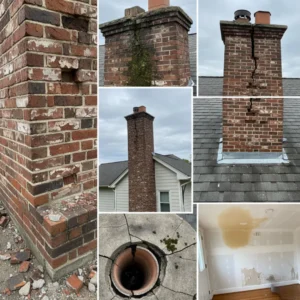
For homeowners in Houston and the surrounding areas, a fireplace is more than just a source of warmth; it is a centerpiece of comfort and
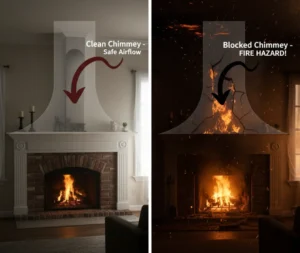
It is a fair question that many homeowners ask. When you are balancing your budget, a professional chimney sweep can feel like an optional expense,

A fireplace is a source of comfort, a place where families gather for warmth and relaxation. But for millions of people living with respiratory issues

A fireplace should be a source of warmth and comfort. But when you light a fire and your living room fills with smoke, that comfort
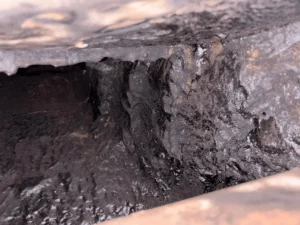
When the weather turns cool, few things are as comforting as a crackling fire. The warmth, the smell, and the ambient glow make a fireplace